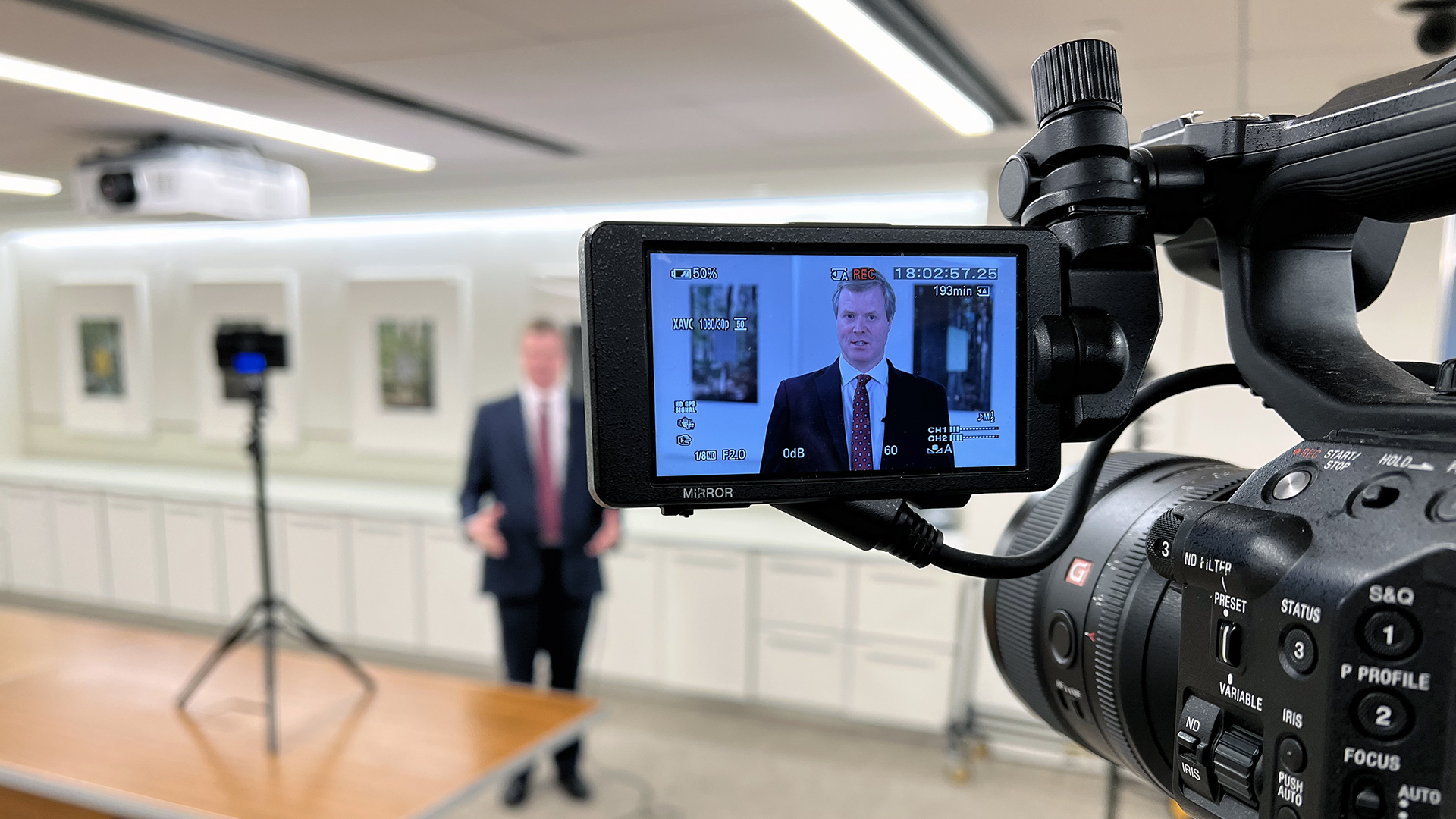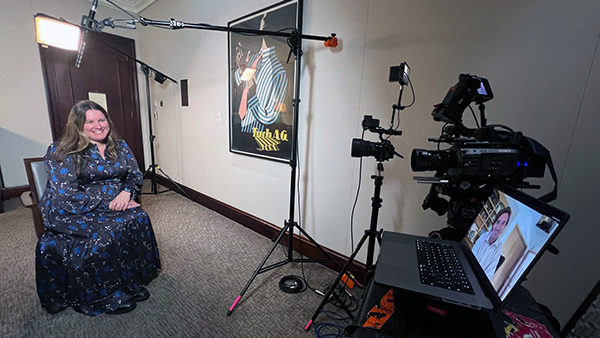
Duncan Sandys delivers an interview from an event in Washington, D.C.
Stretching out your content
The art of making one day of production last 3-6 months
Owner and Director at McLeod Media
For most people and organizations, a day of film production is a big moment. It likely comes with an important event or campaign – something you’ve long been planning for and needs to be impactful and memorable.
After more than a decade of producing on behalf of people and organizations, we’ve come to see productions in a different light than from our days in broadcast TV. In those years of producing continuously on deadline (the 5 p.m. show comes every day whether you’re ready or not), the content was turn-and-burn. Get it done, get it out the door, and then on to the next day. Rinse, repeat.
Productions on behalf of organizations and people are almost the polar opposite.

Think about the possibilities
It’s a big deal to secure a budget for on-site production, followed by post-production. The content captured should be at least somewhat evergreen – that is, it can be captured and reused for months, even a year or two later. This is the lens through which we view productions and how we encourage people to think about the possibilities surrounding their projects.
It is a cornerstone approach behind more than seven years of productions in collaboration with P20, a think tank and advocacy organization working for the payments and Fintech industries in the United States, the UK, and elsewhere worldwide.
“It’s incredible how we’ve been able to get so much content from just 2 hours of production,” said P20’s CEO, Duncan Sandys.
“We prep our guests before they arrive for our events so they know to expect the interview. They sit for 3-4 questions, and from their answers, we usually have at least six or seven short pieces to share on our LinkedIn feed. We usually share one per week, so even one evening of production can carry us for about two months. It’s a pattern we can sustain at a reasonable budget, and the content we share keeps us front and center with our audience throughout the year.”
With the right planning and one great day of production, you can gather enough raw material to churn out three original pieces per month for three months (or perhaps longer). With two days of production, you might have enough to push out for six months.
Putting the pieces together
Consider this timeline and production plan as an example of how it might come together:
Pre-production – 3-4 hours of phone calls, storyboarding, lining up interviews, and settling on talking points. Ensure everyone knows what they’ll be talking about before arriving at the venue or event. They know the subject matter and visuals. People should be comfortable for this, and if they have any reservations or hesitations, that’s where a great production team comes in, to put them at ease and bring out their best.
On-site production – Arrive at the venue or event by 7:30 or 8. Set up and ready to go by 9:30. People often (usually?) prefer to block their calendars in the morning, so we get them in and get them going for 15-20 minute interviews starting by 9:30. Allowing 30 minutes per session, you can fit six interviews in before lunch. After a lunch break and tearing down the interview setup, we focus the rest of the day (2=6 p.m.) on active video (b-roll) to supplement the subject matter, helping tell the story in a unique and engaging way.
Post production – You’re probably looking at an average of two polished pieces from each person, roughly 35-50 seconds apiece. Putting out three pieces a month (usually pausing during holiday weeks) comes out to four months of content. Again, just from one day of production! Shorter pieces are less intensive to edit, meaning a production company should be able to provide these pieces at an affordable rate.
It’s a proven plan that has repeatedly worked for companies and organizations. If you don’t have the budget for full-time, top-of-the-line production, that’s OK. Maybe all it takes is one great day.
